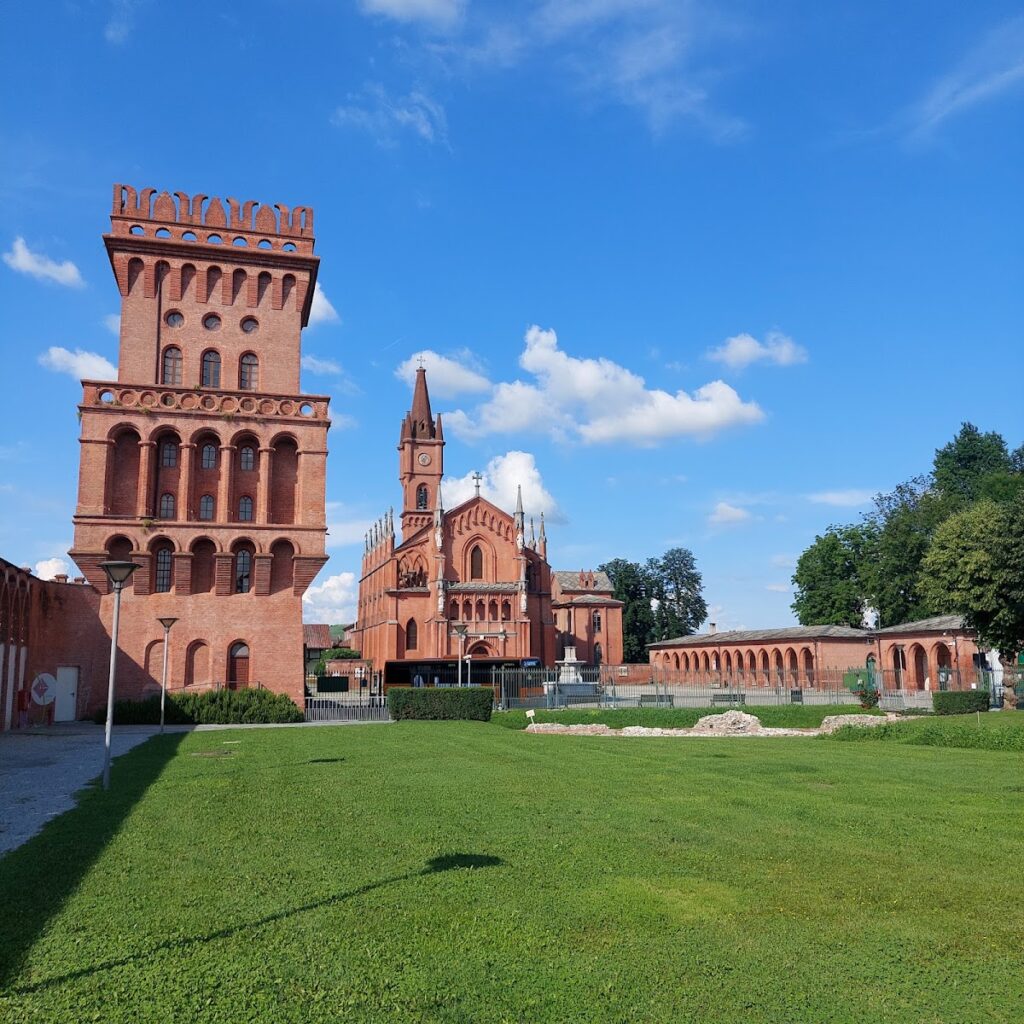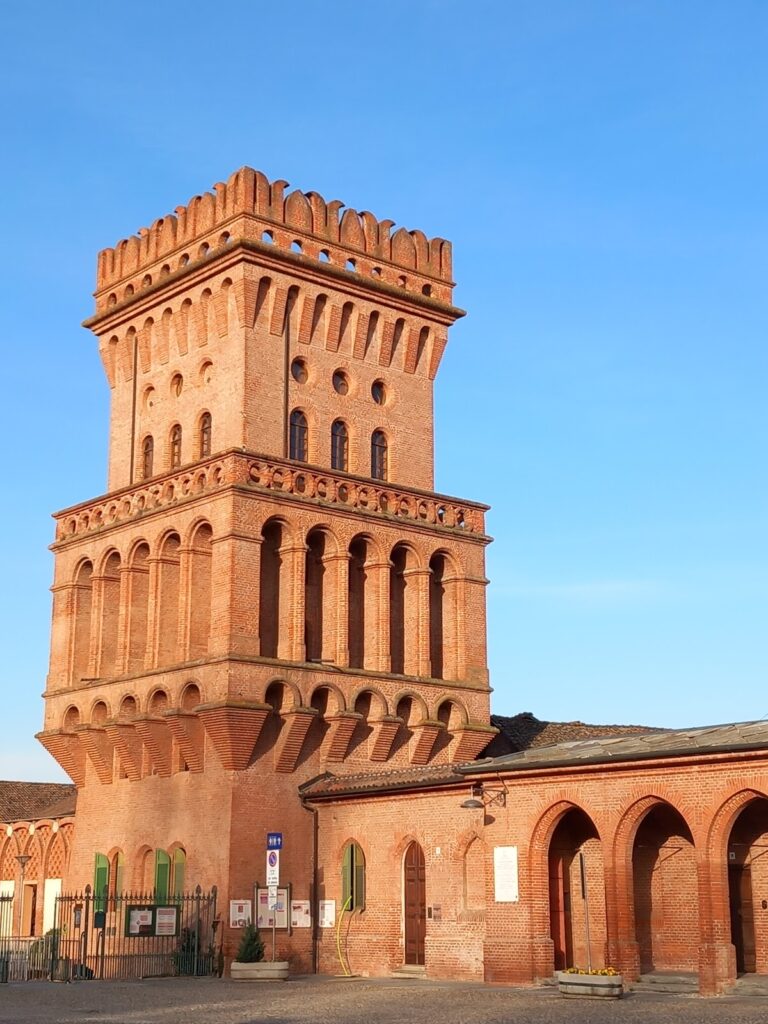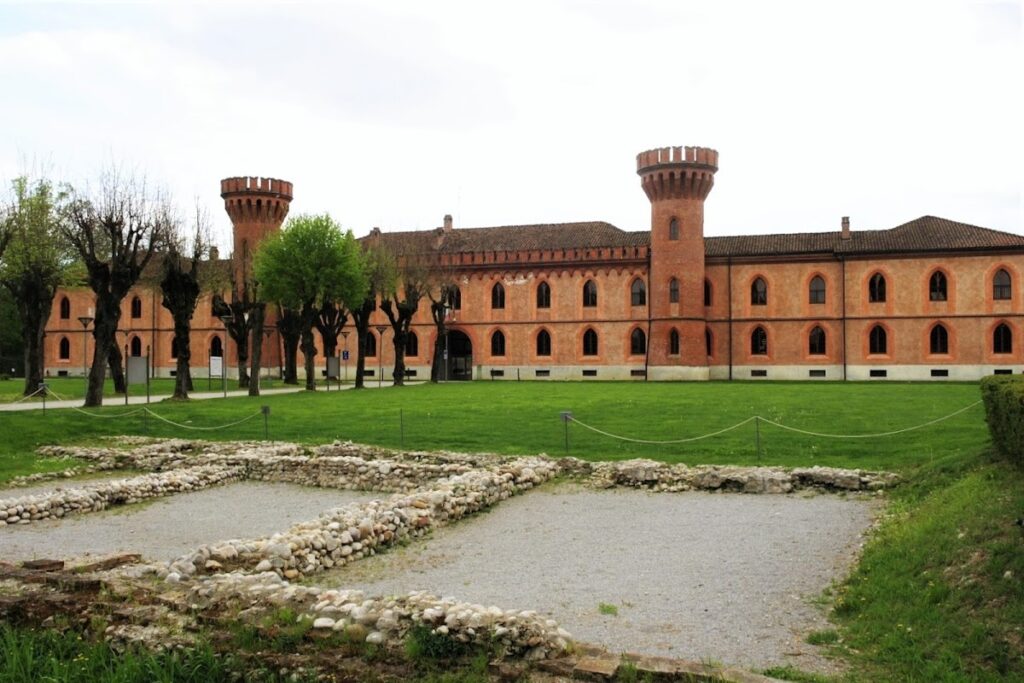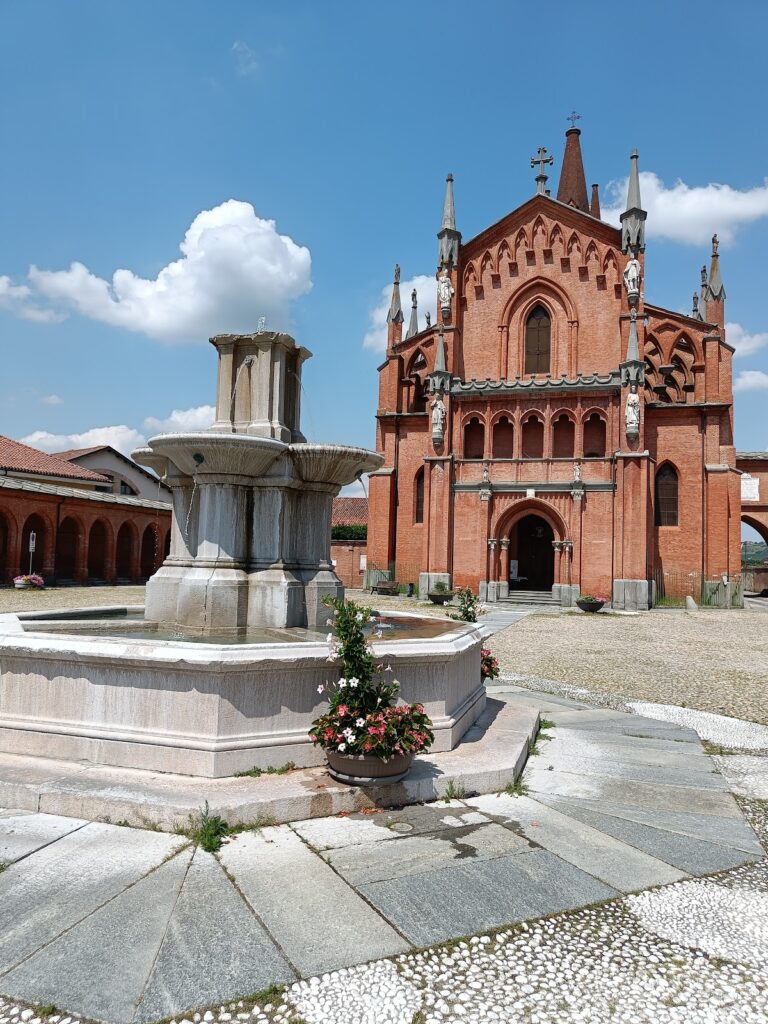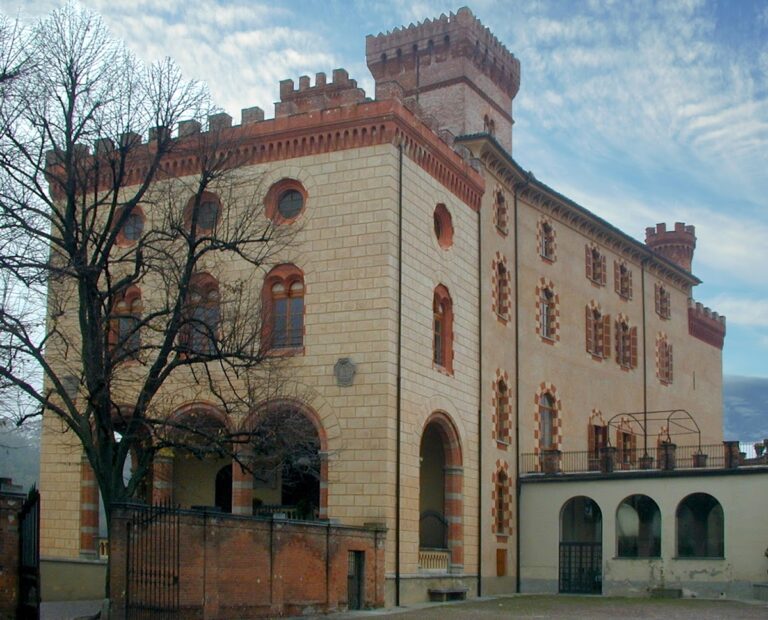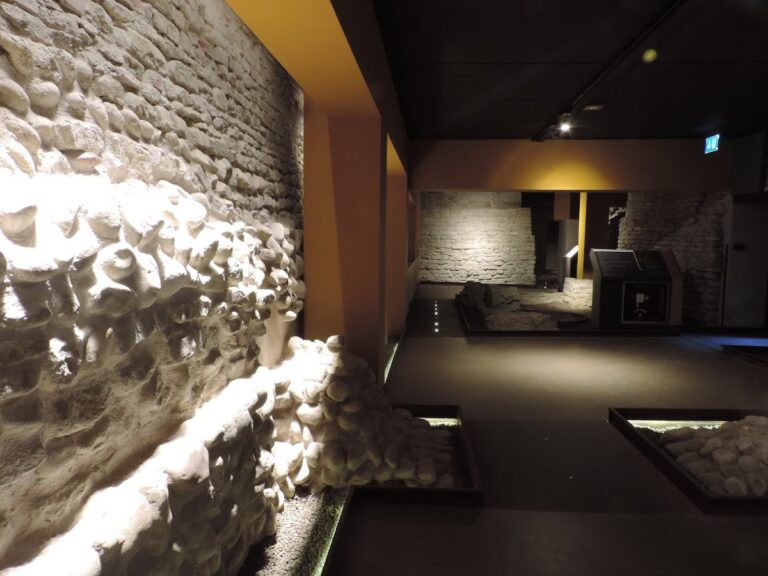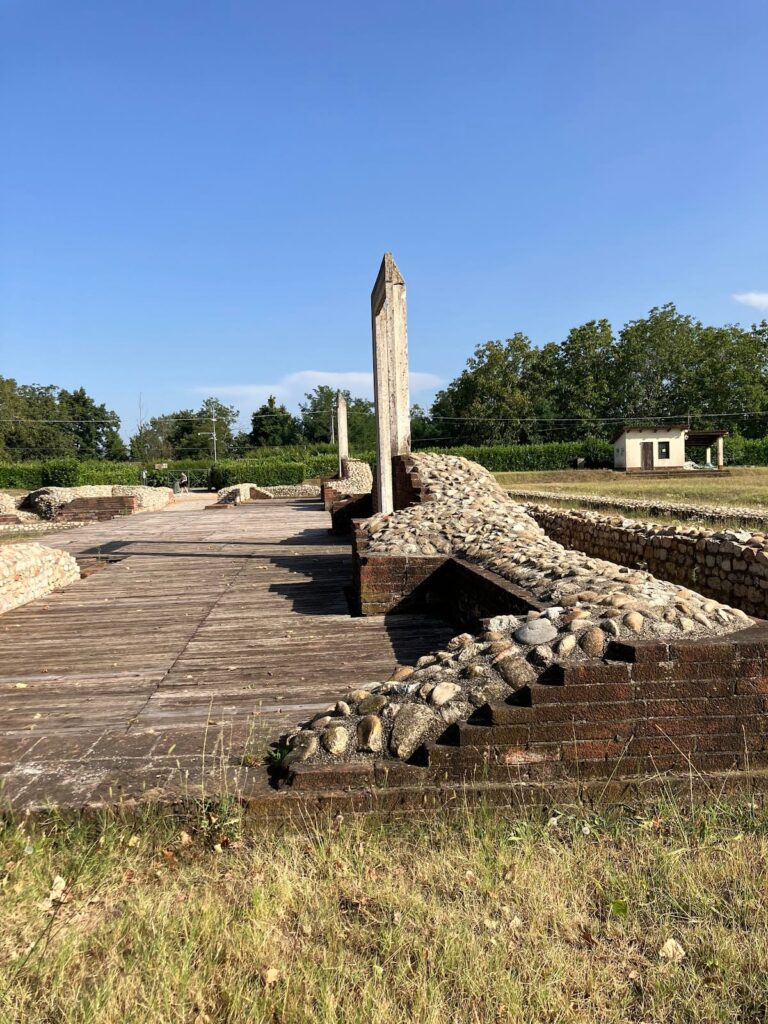Castle Pollenzo: A Historic Fortress and Agricultural Estate in Italy
Visitor Information
Google Rating: 4.5
Popularity: Low
Google Maps: View on Google Maps
Official Website: www.turismoinbra.it
Country: Italy
Civilization: Unclassified
Remains: Military
History
Castle Pollenzo is located in the hamlet of Pollenzo within the municipality of Bra in Italy. The area, originally known as Pollentia in Roman times, has been settled for more than two thousand years, witnessing various phases of fortification, destruction, and rebuilding.
The medieval castle on the site was first established in 1386 during the feudal period. It was commissioned by Antonio Porro, a nobleman of the Visconti family, and constructed by the engineer Andrea da Modena. This initial fortress served as the seat of feudal power and protection in the region. Over time, it came into the possession of the Marquises of Romagnano, who in the late 16th century led an extensive renovation of the castle. Their work reflected the Mannerist style popular at the time, aligning the castle’s appearance with other contemporary architectural trends in nearby areas.
In the 19th century, King Carlo Alberto of Sardinia undertook a dramatic transformation of the castle and surrounding settlement between 1832 and 1847. His vision sought to evoke a romanticized medieval atmosphere, resulting in the near-complete demolition of the earlier village and much of the castle structure. Only the medieval donjon, or main tower, was preserved externally. The redevelopment, directed by architect Pelagio Palagi with assistance from Ernesto Melano and Xavier Kurten, incorporated Gothic Revival elements, along with classical and lavish details that suited the king’s taste. The area was transformed not only architecturally but also functionally, as Carlo Alberto established the estate as a royal center for agricultural and wine production experiments. It also served as a favored hunting lodge and retreat for the monarch.
Following King Carlo Alberto’s era, the castle retained importance within the House of Savoy. After abdicating the throne in 1946, Vittorio Emanuele III adopted the title Count of Pollenzo and dedicated himself to agricultural pursuits at the estate. Despite legal disputes over family properties after World War II, the castle remained privately owned. It was sold in 1972 to the Frus family, proprietors of the Castor appliance company. More recently, beginning in 2004, restoration efforts by the Slow Food association repurposed parts of the complex to house the University of Gastronomic Sciences and the Wine Bank, linking the site’s historical ties to agriculture and enology with modern educational initiatives.
Remains
The layout of Castle Pollenzo today reflects a complex historical layering shaped by medieval origins and 19th-century redesigns. The original castle built in the late 14th century was largely replaced during the 1800s, with only the medieval donjon surviving externally. This tower stands as a visible remnant of the earlier fortress, testament to its medieval construction techniques and defensive purpose.
The 19th-century reconstruction introduced a carefully planned architectural ensemble around a central square. This square features a fountain and is bordered by key buildings including the neo-Gothic church of San Vittore, the Albertina farmstead, the castle itself, and the large “Agenzia” complex. The church, built in the 1840s under Ernesto Melano’s design, showcases the Gothic Revival style popular during the period. Inside, it houses a painting depicting the martyrdom of Saint Victor by Carlo Bellosio and retains a finely crafted 16th-century wooden choir originally from the Abbey of Staffarda, highlighting an important reuse of earlier religious art.
Adjacent to the castle, the Agenzia is a prominent courtyard building that once served as the administrative headquarters for Savoy family estates. Restored in the early 2000s, it now accommodates modern institutions including the University of Gastronomic Sciences, the Wine Bank, as well as a hotel and restaurant. The building’s architectural features reflect the 19th-century vision, emphasizing both function and elegance.
Artistic contributions throughout the 19th-century works involved notable figures such as Pelagio Palagi, who developed various designs including an unrealized neo-Gothic façade preserved in archives in Bologna, as well as sculptors and painters like Moncalvo, Giuseppe II Gaggini, and Pietro Cremona. Their craftsmanship infused the restoration with rich decorative detail and stylistic integration.
Despite the layers of transformation, the castle and its auxiliary structures remain privately owned as of 2022 and are not accessible to the public. The ensemble today presents a unique example of a site where medieval origins intersect with 19th-century romantic reformulation, preserving distinct elements of both periods in its built environment.
